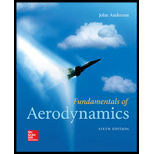
Concept explainers
Prove that three-dimensional source flow is irrotational.
To prove:
The velocity having the only component in radial direction & all other components are zero.
Explanation of Solution
Formula used:
The flow can be proved to be irrotational if the cross gradient of velocity is zero.
Proof:
The flow is said to be irrotational if there will be no net rotation of moving fluid corresponding to chosen one axis at an instant to another.
The rotation of fluid-particle is due to torsion applied by shear force.
For an ideal fluid, there is no shear force due to which it is irrotational.
As the source flow is radially symmetrical flow field and it should be irrotational.
To prove the fluid to be irrotational we take the fluid particle in three directions, there is only one component in the radial direction as per the given problem.
The velocity component in the spherical component is given by:
From equation 2.24 from the textbook we get:
For having only a radial component :
We get:
As for irrotational flow
Curl of V should be zero:
Now,
Taking Left-hand side:
L.H.S=R.H.S
Hence proved.
Want to see more full solutions like this?
Chapter 6 Solutions
Fundamentals of Aerodynamics
Additional Engineering Textbook Solutions
HEAT+MASS TRANSFER:FUND.+APPL.
Vector Mechanics for Engineers: Statics and Dynamics
Machine Tool Practices (10th Edition)
EBK FUNDAMENTALS OF THERMODYNAMICS, ENH
Vector Mechanics For Engineers
Applied Fluid Mechanics (7th Edition)
- What is the main difference between the steady, incompressible Bernoulli equation for irrotational regions of flow, and the steady incompressible Bernoulli equation for rotational but inviscid regions of flow?arrow_forwardExplain the importance of the Reynolds transport theorem in fluid mechanics, and describe how the linear momentum equation is obtained from it.arrow_forwardWhat is meant by three-dimensional flow? Give an example of each of three-, two-, and one-dimensional flows.arrow_forward
- Show that ? = ? +1/2 ln(?2 + ?2) is a possible velocity potentialfor a two-dimensional incompressible irrotational flow field.arrow_forwardIn what way is the Euler equation an approximation of the Navier–Stokes equation? Where in a flow field is the Euler equation an appropriate approximation?arrow_forwardConsider a flow field in polar coordinates, where the stream function isgiven as ψ = ψ(r, θ). Starting with the concept of mass flow betweentwo streamlines, derive your answer.arrow_forward
- How is the angular momentum equation obtained from Reynolds transport equations?arrow_forwardFlow with small Re tends to be ____________ A. Re has no relation with flow types B. transitional flow C. turbulent flow D. laminar flowarrow_forwardDifferentiate incompressible and compressible flow. Give at least two (2) examples relating to aeronautical and/or aerospace.arrow_forward
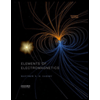 Elements Of ElectromagneticsMechanical EngineeringISBN:9780190698614Author:Sadiku, Matthew N. O.Publisher:Oxford University Press
Elements Of ElectromagneticsMechanical EngineeringISBN:9780190698614Author:Sadiku, Matthew N. O.Publisher:Oxford University Press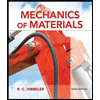 Mechanics of Materials (10th Edition)Mechanical EngineeringISBN:9780134319650Author:Russell C. HibbelerPublisher:PEARSON
Mechanics of Materials (10th Edition)Mechanical EngineeringISBN:9780134319650Author:Russell C. HibbelerPublisher:PEARSON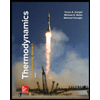 Thermodynamics: An Engineering ApproachMechanical EngineeringISBN:9781259822674Author:Yunus A. Cengel Dr., Michael A. BolesPublisher:McGraw-Hill Education
Thermodynamics: An Engineering ApproachMechanical EngineeringISBN:9781259822674Author:Yunus A. Cengel Dr., Michael A. BolesPublisher:McGraw-Hill Education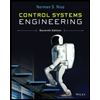 Control Systems EngineeringMechanical EngineeringISBN:9781118170519Author:Norman S. NisePublisher:WILEY
Control Systems EngineeringMechanical EngineeringISBN:9781118170519Author:Norman S. NisePublisher:WILEY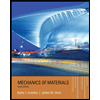 Mechanics of Materials (MindTap Course List)Mechanical EngineeringISBN:9781337093347Author:Barry J. Goodno, James M. GerePublisher:Cengage Learning
Mechanics of Materials (MindTap Course List)Mechanical EngineeringISBN:9781337093347Author:Barry J. Goodno, James M. GerePublisher:Cengage Learning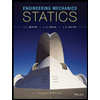 Engineering Mechanics: StaticsMechanical EngineeringISBN:9781118807330Author:James L. Meriam, L. G. Kraige, J. N. BoltonPublisher:WILEY
Engineering Mechanics: StaticsMechanical EngineeringISBN:9781118807330Author:James L. Meriam, L. G. Kraige, J. N. BoltonPublisher:WILEY





